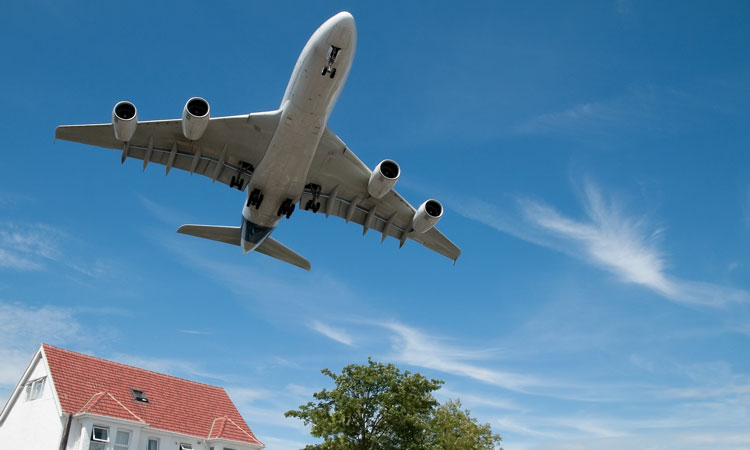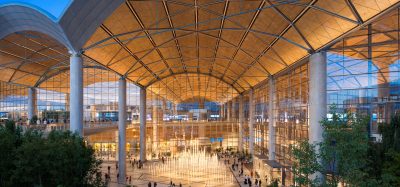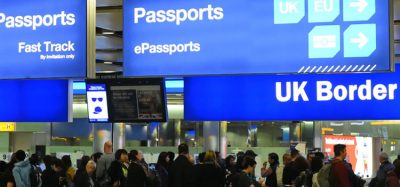The road to implementing a balanced approach to aircraft noise management
Posted: 24 August 2021 | José De la Cruz | No comments yet
José De la Cruz, a lawyer at Lima Airport Partners SRL (LAP), speaks to International Airport Review about the work that his airport has been undertaking to help to reduce noise disturbance in the surrounding communities.


The development of the aviation and airport industry over the years has contributed in various factors to the development of the global economy, generating numerous jobs and serving as the main ally in the face of crises that may arise due to the immediate response that can be provided with air transport. Thus, for several years, the development of the aeronautical industry has been focused on sustainability, in line with 15 of the 17 United Nations (UN) Sustainable Development Goals (SDGs), which were proposed as part of the 2030 Agenda. However, despite all of the benefits that the aeronautical industry offers us, there are still some problems to be solved, and one of them is aircraft noise.
Broadly speaking, noise is already a problem that affects people’s daily activities. This is how aircraft noise and the constant increase in air operations have consequently led to a greater perception of this problem by most of the communities surrounding airports, which is often claimed to limit the daily operation, as well as the construction of, new airports or their expansion.
A balanced approach
In response to this problem, the International Civil Aviation Organization (ICAO) proposed managing aircraft noise with a ‘balanced approach’, which consists of addressing the following four main elements:
- Reduction of noise at the source
- Noise abatement operational procedures
- Land-use planning and management
- Operating restrictions.
Likewise, ICAO recognises that the implementation of the balanced approach must be specific for each airport and will require an acoustic impact study in accordance with the recommended methods for the analysis of acoustic curves at airports and a noise map.
The development of the aviation and airport industry over the years has contributed in various factors to the development of the global economy, generating numerous jobs and serving as the main ally in the face of crises that may arise due to the immediate response that can be provided with air transport. Thus, for several years, the development of the aeronautical industry has been focused on sustainability, in line with 15 of the 17 United Nations (UN) Sustainable Development Goals (SDGs), which were proposed as part of the 2030 Agenda. However, despite all of the benefits that the aeronautical industry offers us, there are still some problems to be solved, and one of them is aircraft noise.
Broadly speaking, noise is already a problem that affects people’s daily activities. This is how aircraft noise and the constant increase in air operations have consequently led to a greater perception of this problem by most of the communities surrounding airports, which is often claimed to limit the daily operation, as well as the construction of, new airports or their expansion.
A balanced approach
In response to this problem, the International Civil Aviation Organization (ICAO) proposed managing aircraft noise with a ‘balanced approach’, which consists of addressing the following four main elements:
- Reduction of noise at the source
- Noise abatement operational procedures
- Land-use planning and management
- Operating restrictions.
Likewise, ICAO recognises that the implementation of the balanced approach must be specific for each airport and will require an acoustic impact study in accordance with the recommended methods for the analysis of acoustic curves at airports and a noise map.
In this context, and given the need to provide solutions to the noise problem, during 2019, Lima Airport Partners (LAP), operator of Jorge Chávez International Airport (LIM) in Peru, with the help of the aeronautical authority from Chile, developed the acoustic impact study needed to know exactly the problem that we were facing. This study helped us to start working with various entities such as air traffic control (ATC), the aeronautical authority, the airport operator and municipalities, all of whom handled important information within the balanced approach; however, up to that point, there was no integrated coordination.
During 2020 and 2021, despite being the worst years in air transport history and aware that the project could not be stopped, Lima Airport Partners implemented a real-time aircraft noise monitoring system, of which the main functionality is to acknowledge the recording of noise levels produced by aircraft operations and their correlation with radar information and flight plans.
After overcoming border closure in several countries, and changes in the itineraries, it was possible to complete the installation of several monitoring stations for the airport’s current runway, and projected a similar amount for the second runway that is under construction. Up to this point, we could say that we had acquired a very robust tool that would provide us with relevant data to know what the behaviour of aircraft noise was, but this is not the only thing that is required for efficient management.
The next step was to involve all of the entities necessary to address the noise problem, so that its management can be comprehensive and its recommendations be generated from a sustainable approach; remember, the four elements indicated by ICAO do not always fall on a single entity. For this reason, it was necessary to generate alliances and commitments since the problem was transversal, and isolated efforts were not going to give adequate results.
Technical Committee for Aircraft Noise Mitigation
During 2020, LAP promoted the creation of a Technical Committee for Aircraft Noise Mitigation that oversees jointly, from a purely technical perspective, the aircraft noise generation during their take-off, landing or overflight operations, to establish recommendations that contribute to noise mitigation in favour of a harmonious co-existence of the airport and the surrounding communities. It is worth mentioning that this committee brings together several authorities from environmental, aeronautical, municipal, ATC, airlines and airport operators, so we assured that all those involved in noise management are present.
Currently, LAP has assumed the leadership of the committee and has given special attention to collect the best international practices and experiences, and then transmit them to all of the members of the committee. Aircraft noise is complex; therefore, it was necessary to carry out training sessions during 2021 by virtual media, as we had to avoid face-to-face meetings. It is worth mentioning that these trainings were provided by European companies with several years’ experience in performing noise monitoring. Likewise, the aeronautical authority from Chile has shared with us their more than 10 years of experience in aircraft monitoring and how it had been managed to comply with environmental authorities and the communities’ claims.
The sessions of the committee allow that beyond the legal responsibility of each entity and based on collaborative participation to achieve an articulated engagement. As an example, those in charge of land planning can talk with those in charge of authorising flight paths to avoid certain areas, such as hospitals or schools, which must have special protection. They can also inform local government and future landowners of the noise exposure in the sites close to the airport.
Finally, this committee is the only one of its kind in the Latin American and Caribbean (LAC) region. However, we expect other countries in the region to reply to this collaborative practice, since we believe that this may be the best way to achieve sustainable and technical recommendations within the framework of a balanced approach. We have achieved the participation of more than 20 organisations, both public and private, demonstrating that synergies are the key to propose joint, comprehensive and viable solutions.


Stay Connected with International Airport Review — Subscribe for Free!
Get exclusive access to the latest airport and aviation industry insights from International Airport Review — tailored to your interests.
✅ Expert-Led Webinars – Gain insights from global aviation leaders
✅ Weekly News & Reports – Airport innovation, thought leadership, and industry trends
✅ Exclusive Industry Insights – Discover cutting-edge technologies shaping the future of air travel
✅ International Airport Summit – Join our flagship event to network with industry leaders and explore the latest advancements
Choose the updates that matter most to you.
Sign up now to stay informed, inspired, and connected — all for free!
Thank you for being part of our aviation community. Let’s keep shaping the future of airports together!
Issue
Related topics
Air traffic control/management (ATC/ATM), Airside operations, Noise abatement, Passenger experience and seamless travel, Sustainability


















